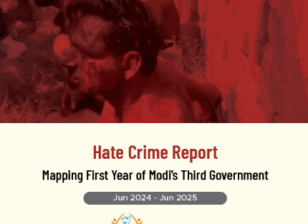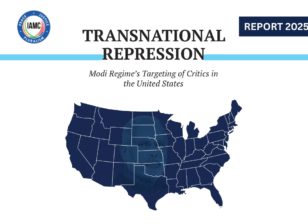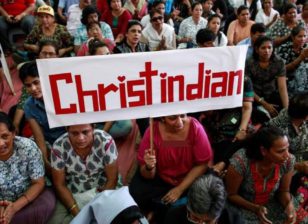UPA Goverment India – Report to the People 2009-2010
In May 2010, the United Progressive Alliance (UPA) governemnt has completed 1 year of its second 5-year term with Dr.Manmohan Singh completing his 6th consecutive year as the Prime Minsiter of India.
How has the UPA focused on socio-economic and regional inclusion, the empowerment of women, the minorities and the weaker sections of Indian society?
A report was released by UPA government on May 7, 2010 titled “UPA Goverment Report to the People 2009-2010”.
Part of the report dealing with Minorities under Sections 3.4 is reproduced here. It is left to the readers to interpret and judge the perfromance of the UPA government.
=========================================================
Section 3.4 An Inclusive Agenda for the Minorities
3.4.1 Targeting benefits of development to the minorities
Prime Minister’s New 15-Point Programme It has been ensured that 15% of targets and outlays for schemes included in the Prime Minister’s New 15-Point programme for the Welfare of Minorities and considered amenable to targeting, have been so earmarked.
Three schemes have been added to the programme in 2009-10 viz. (i) National Rural Drinking Water Programme (NRDWP); (ii) Urban Infrastructure and Governance (UIG); and (iii) Urban Infrastructure Development Scheme for Small and Medium Towns (UIDSSMT). 64 projects, at an estimated cost of over Rs. 8,600 crore, have been sanctioned under the Urban Infrastructure & Governance (UIG) component of Jawarharlal Nehru National Urban Renewal Mission (JNNURM) for implementation in 17 towns with a sizable minority population. 101 projects, at an estimated cost of more than Rs. 2500 crore, have been sanctioned in 83 such towns under the Urban Infrastructure Development Scheme for Small and Medium Towns (UIDSSMT) component.
In 2009-10, under the scheme of Sarva Shiksha Abhiyan (SSA), 4457 primary and upper primary schools have been constructed, 3530 primary and upper primary schools have been opened, 20,588 additional class rooms have been constructed, 27 Kasturba Gandhi Balika Vidyalaya (KGBV) have been sanctioned and 7765 teachers sanctioned in blocks and districts having a substantial minority population. 502 public sector bank branches were opened in 2009-10 (upto December 2009) in districts with a substantial minority population.
Over Rs. 96,000 crore of bank credit was provided to the minorities in 2009-10 (upto September 2009). 60 ITIs, located in Minority Concentration Districts, are to be upgraded as part of the Prime Minister’s New 15 Point Programme.
3.4.2 Improving access to-Education
During 2009-10, 17.29 lakh scholarships were given to children belonging to the minority communities for their pre-matric education. An amount of Rs. 202.94 crore was spent. 48% of the pre-matric scholarships were awarded to girls.
Under the post-matric scholarship scheme, 3.88 lakh scholarships were awarded at a cost of Rs. 148.74 crore. Nearly 55% of those awarded scholarships were girls. 35,982 merit-cum-means scholarships were awarded at a cost of Rs. 97.51 crore, with nearly one third being girl students.
Under the Meritorious Scholarship Scheme of the Maulana Azad Education Foundation, for girl students in classes XI and XII, 15,070 girls were awarded scholarships at a cost of Rs. 18.08 crore.
Under the Maulana Azad National Fellowship, 756 fellowships are shortly to be awarded. 30%will be to women students.
Credit
The National Minority Finance Development Corporation (NMDFC) has disbursed Rs. 197.75 crore for assisting 1,04,594 minority beneficiaries during 2009-10 out of which an amount of Rs. 54.53 crore has been disbursed under the micro-finance scheme to 68,451 beneficiaries.
3.4.3. Waqf development
A bill to amend the Waqf Act, 1995 was introduced in Parliament. It provides for timely completion of surveys of waqf properties, reduction of the scope of alienation of waqf properties, providing penal provisions to prevent encroachment of waqf properties, representation of women in the waqf boards, greater accountability and efficiency in the administration of the waqf properties by the waqf boards, etc.
The bill was passed by Lok Sabha on 7th May 2010.
In February 2010, under a new centrally sponsored scheme, grants-in-aid of Rs. 8.06 crore has been disbursed to 11 State Waqf Boards, the Central Waqf Council and the National Informatics Centre Services Inc. (NICSI) for the computerization of waqf properties.
3.4.4 Multi-sectoral district plans for Minority Concentration Districts
Out of 90 identified MCDs, the district plans of 80 MCDs (15 fully and 65 partly) have been approved at a total estimated cost of Rs. 2343.75 crore.
========================================
You can read or download the full report at the link below.
UPA Goverment Report to the People 2009-2010
| Attachment | Size |
|---|---|
| UPA_Govt_India_performance_report_May2010.pdf | 9.12 MB |




